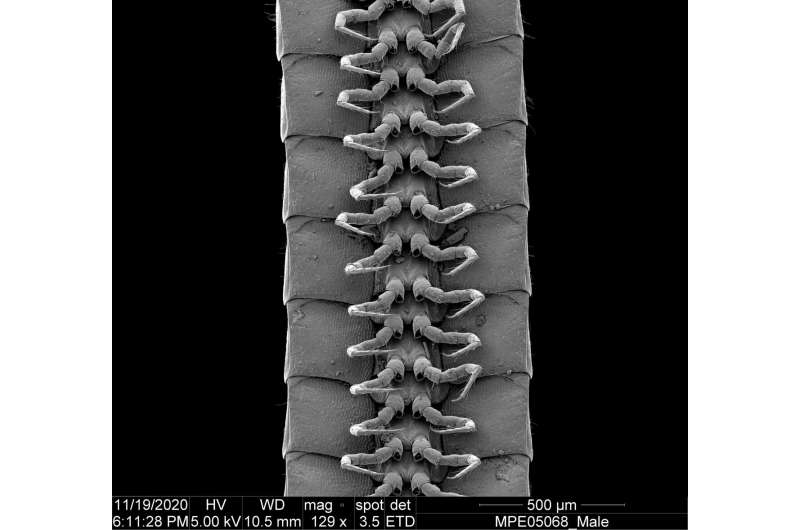
Yes, of course, that’s completely ridiculous. And yet… Well, that’s what they say and, it is NOT April 1. Check your calendar:
Paul Marek and colleagues discovered the millipede 60 meters underground in a drill hole created for mineral exploration in the mining area of the Eastern Goldfields Province of Australia. It has 1,306 legs—more than any other animal—and belongs to a new species that has been named Eumillipes persephone. The millipede’s name derives from the Greek word eu- (true), the Latin words mille (thousand) and pes (foot), and references the Greek goddess of the underworld, Persephone. The authors measured four members of the new species and found that they have long, thread-like bodies consisting of up to 330 segments and are up to 0.95mm wide and 95.7mm long. They are eyeless, have short legs, and cone-shaped heads with antennae and a beak.
Analysis of the relationships between species suggests that E. persephone is distantly related to the previous record holder for the greatest number of legs—the Californian millipede species, Illacme plenipes. The authors suggest that the large number of segments and legs that have evolved in both species may allow them to generate pushing forces that enable them to move through narrow openings in the soil habitats they live in.
Nature Publishing Group, “First millipede with more than 1,000 legs discovered” at Phys.Org (December 16, 2021)
he paper is open access.